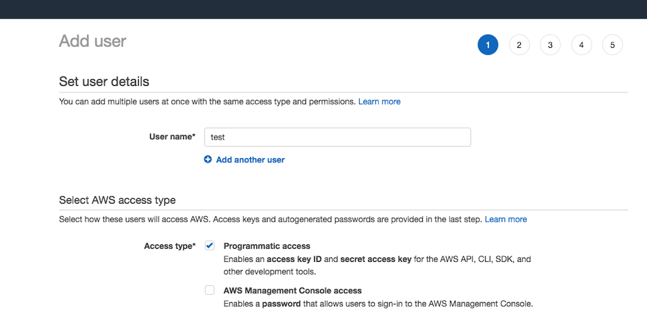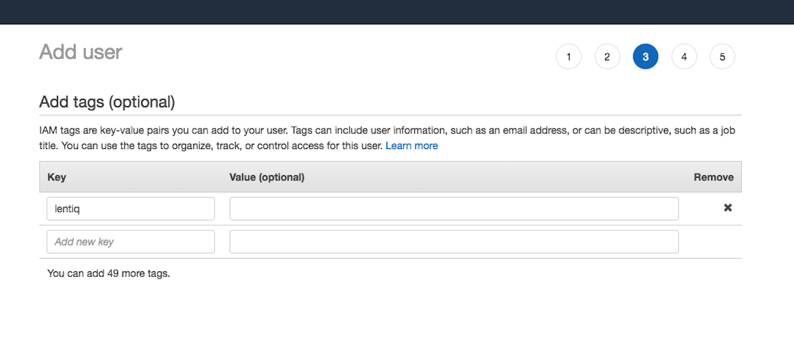Deploying on AWS
Some actions have to be undertaken before creating a data lake and being able to automate API operations.
You can quickly create an AWS account if you don’t already have one. A valid bank card is required during the registration process, but you will only be billed for the resources that you actually use.
Setting up your AWS account
You need to create a new user with programmatic access. This allows us to provision all the services requires by Lentiq on your account.
Log in to your AWS account.
Go to the user administration menu in the top right.
Click My security credentials.

Go to Users using the menu on the left.
Click Add user.
Go through the AWS wizard, making sure to enable programmatic access for the user.

Set permissions for the newly created user and attach existing policies to allow administrator access.
These permissions are needed because Lentiq provisions a Kubernetes cluster for each of your data pools and an object storage bucket for each of your projects behind the scenes. These are fully managed and configured by our application. We recommend to only access these resources from the Lentiq Management interface.



- Finish creating the user.
Make sure you save the Access key ID and Secret access key for this user, as they will be required later on. Download the .csv file for future use.
Linking Lentiq to your AWS account
- Create a Lentiq data pool, selecting Amazon Web Services as the Cloud Provider and creating a new credential using your access key ID and secret access key.
See the creating a data pool guide for more information on creating a data pool.

- Configure the initial Spark cluster and its underlying architecture.

While an c4.2xlarge machine provides enough resources to deploy Lentiq, the initial Spark cluster and internal processes use 6 CPU cores, so you should provision a larger server if you plan to use additional applications.
However, keep in mind that the underlying server remains active and you are billed for it even if no Lentiq applications are running until you delete the data pool, so don't deploy unnecessary resources that will generate higher costs.
You are now ready to create a data pool in Lentiq.
